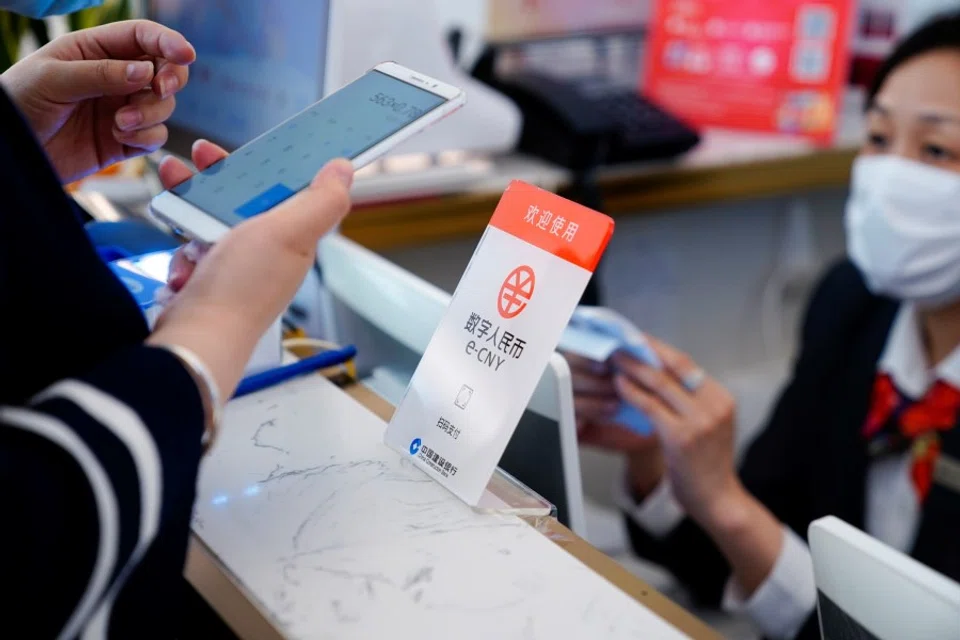China's central bank digital currency (CBDC) innovations
In part 2 of his article on China's digital currency ambitions, James Pang takes a look at how a Chinese central bank-issued digital currency - the DCEP - can complement existing e-payment methods and have an edge over traditional cash and cryptocurrencies when it is fully rolled out. Being the first major economy to launch a CBDC, China's experience will be useful for other countries looking to hop onto the digital currency bandwagon. Utilisation of Chinese DCEP could also aid the process of internationalising the Chinese Yuan (RMB).

When it comes to developing a central bank digital currency (CBDC) or DCEP in the case of the Chinese digital currency, many people might wonder: why do we need one, now that e-payments are so convenient? Particularly in China, e-payment methods such as WeChat Pay and Alipay have become social infrastructure akin to water and electricity, bringing unprecedented convenience. So why develop DCEP? Is that an unnecessary step? In fact, when the People's Bank of China (PBOC) first started studying DCEP, it already systematically and comprehensively analysed the necessity of having it.
DCEP can complement WeChat Pay and Alipay
First, with e-payment methods like WeChat Pay and Alipay being part of the social infrastructure, any problems with them would have a huge impact on people's daily lives and cause a disruption to society at the systemic level. It is common knowledge that Tencent and Alibaba - the ones behind WeChat Pay and Alipay - are private companies. Generally, having social infrastructure completely run by private companies carries a certain risk, because while Tencent and Alibaba are both doing very well now, it is difficult to guarantee that they will continue to prosper. Historically, private companies can rise and fall very quickly. If WeChat Pay and Alipay ran into problems one day, there would be a need for a government-run payment system to take their place and reduce the impact on society.
China's CBDC is designed to provide similar functions and user experience as WeChat Pay and Alipay, so that if the latter malfunction, people can still use suitable public facilities from the government, without much disruption to their lives. Of course, DCEP is not meant to replace WeChat Pay and Alipay - right now, it seems that both systems are here for the long haul.

Second, while WeChat Pay and Alipay are convenient, they have their limitations. Currently, e-payment methods are tied to bank accounts, so without a bank account, one cannot tap on the convenience of WeChat Pay and Alipay. And at the moment, opening a bank account is quite troublesome. The user generally has to go to the bank with their identity card and get through complicated processes before opening an account. According to statistics, some 200 to 300 million people in China do not have bank accounts, so this group would not be able to enjoy the convenience of e-payment. This also applies to foreigners who are in China for leisure or business and do not have a China bank account. But for DCEP, people can conveniently set up a digital wallet even without a bank account, and enjoy the relevant financial services and convenience of e-payment, for true financial inclusion.
Third, e-payment methods now all require a network connection, without which transactions cannot happen. Compared to traditional cash payments, sometimes this is not convenient enough. But a DCEP wallet can work on near field communication (NFC) when there is no network connection, which is a good combination of the strengths of e-payments and cash payments. Furthermore, DCEP borrows a lot of innovative ideas from the cryptocurrency area, such as smart contracts and value characteristics. Theoretically, it can provide a better and more flexible user experience than traditional e-payment methods. For example, with smart contracts, we can limit children's use of DCEP to only purchasing books and toys.
The characteristics of DCEP
In September 2020, an essay in Financial News online by then PBOC deputy governor Fan Yifei gave a comprehensive definition of DCEP: "The DCEP is an official digital currency issued by the PBOC, circulated by authorised operators who fulfil exchanges with the public. It is based on the general account system and supports the loose coupling function of bank accounts. It is equivalent to banknotes and coins, and has value characteristics and legal compensation, with support for controlled anonymity." We will now analyse what each part of this definition means, in order to break down the main characteristics of DCEP.
First, "an official digital currency issued by the PBOC" characterises the DCEP. It is a legal currency - not a new currency - and is no different from RMB notes and coins, except in digital form. "Circulated by authorised operators who fulfil exchanges with the public" refers to the two-tiered operating system of the DCEP. That is, the PBOC does not directly issue DCEP to the public, but this will be done by a second tier of distributing organisations (including commercial banks or third-party payment organisations), which is the same as how the RMB is currently circulated. Such a setup would have less direct impact on China's financial system, as it can use current resources to spark interest among commercial banks, and make DCEP more accepted.

In the line that DCEP is "based on the general account system and supports the loose coupling function of bank accounts", the general account system is in contrast with the narrow account system (i.e., current bank account system). The general account means anything that marks your unique identity, such as our biological characteristics like fingerprints or the iris, or mobile phone number or car plate number - all these can be used to set up a DCEP wallet. That way, even if one does not have a bank account, they can use other unique identifiers to set up a DCEP wallet, which would be a great convenience for true financial inclusion.
Having the "equivalent to banknotes and coins" is just reiterating that DCEP is a legal currency, but in a digital form, and a stablecoin of 1:1 value with banknotes and coins. This is very different from some cryptocurrencies such as Bitcoin or Ethereum, with large price fluctuations.
Having "value characteristics" is an interesting concept for DCEP, taken from Bitcoin and other cryptocurrencies. Generally, digital currencies come in two forms - either account-based as offered by traditional banks, or value-based, that is, tokens. Cryptocurrencies such as Bitcoin have encryption functions that allow convenient transfer of value.
Cryptocurrency transfers are similar to transactions of physical items: when a Bitcoin is transferred from one digital wallet to another, its ownership is also transferred in a very convenient process. Traditional account-based transfers usually involve complicated flows of information and funds in the backend that require a lot of coordination efforts. It often takes days for a transaction to be truly settled - the seemingly real-time transfers we see on WeChat Pay and Alipay are actually because these companies pre-pay on our behalf.
Of course, DCEP does away with the single-layer design and Proof-of-Work (PoW) consensus protocol that Bitcoin uses, which makes the value transfer process more efficient. Being with "legal compensation" means that as DCEP is an official currency of China, if a user pays with DCEP within China, the receiver cannot reject the payment.
"Support for controlled anonymity" is a critical selection of some methods used in cryptocurrencies, safeguarding the public's privacy while preventing illegal activities such as money laundering and terrorist funding. To put it simply, there are different types of digital wallets for DCEP, and anonymous wallets are only suitable for small value transactions where the amount is limited. As for large transactions, users need to set up a special DCEP wallet that usually requires identity verification.
Replacing traditional cash with DCEP will also drastically reduce the production and circulation cost of traditional cash. Cryptographic algorithms would also prevent forging of DCEP.

China at the forefront of the world
The above analysis of the PBOC's definition of DCEP gives us an understanding of some important characteristics of DCEP. Generally, DCEP is positioned as cash in circulation (M0), and its rollout is undoubtedly a milestone in China's financial system, which makes it significant.
First, DCEP will help to make China's current financial systems more efficient, while reducing systemic risk and payment costs, to achieve true financial inclusion. Replacing traditional cash with DCEP will also drastically reduce the production and circulation cost of traditional cash. Cryptographic algorithms would also prevent forging of DCEP.
Second, CBDCs is an important trend in global finance, which could restructure the international trade settlement system. China is the first major economy to launch a CBDC, leading the world in research and practice in the field. Therefore, DCEP is also very helpful in promoting the internationalisation of the RMB.
In addition, with the development of blockchain and cryptography technologies in recent years, the breakneck, wild development of cryptocurrencies has had an impact on the traditional financial sector, and also brought many new insights. The rollout of DCEP will help China's financial system respond to the potential risks of cryptocurrencies, and seize the opportunities that they potentially bring. Overall, the digital currency sector is developing rapidly, and we can look forward to more innovations in the sector over the next few years, in the push towards true financial inclusion.
Continue to Part 1: How China took the lead in the digital currency race



![[Photos] Fact versus fiction: The portrayal of WWII anti-Japanese martyrs in Taiwan](https://cassette.sphdigital.com.sg/image/thinkchina/3494f8bd481870f7c65b881fd21a3fd733f573f23232376e39c532a2c7593cbc)

